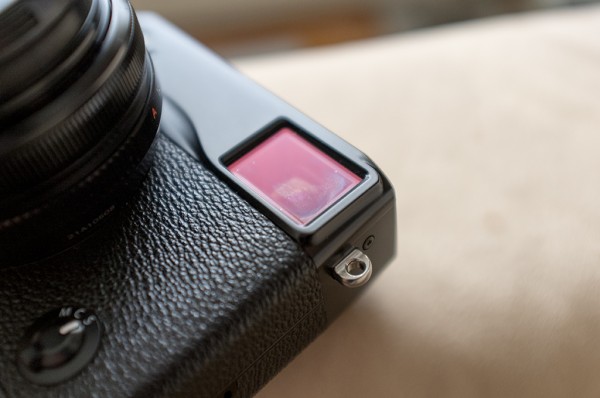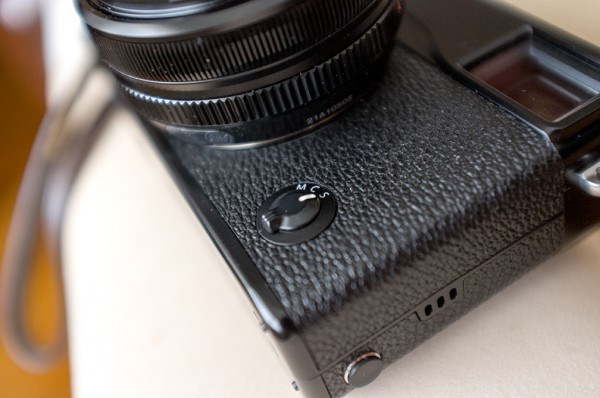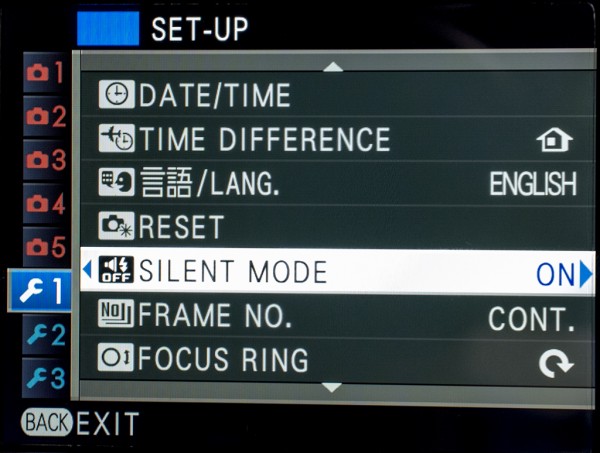My Settings For The Fuji X-Pro1:
Hey everyone, sorry for the lack of posts lately. I’ve just been very busy with processing my vacation photos from Bermuda. One of our fellow readers suggested I write up a post about my settings on the Fuji X-Pro1, and I thought that it was a great idea so here you are everyone.
General Settings For The Fuji X-Pro1:
In general, I try to keep everything as simple as possible, which is actually one of the reasons for why I love the Leica M9 or in this case, the Fuji X-Pro1. They are cameras that are purposely built with a lack of electronic wizardry. I find that sometimes the electronics just get in the way, and it’s actually a bit liberating to use a camera in just its raw form. It kind of reminds me of the film days :).
My ISO Settings For The Fuji X-Pro1:

After saying that, I always like to choose my own ISO. I know, the auto ISO can be very useful and quick but I’m use to choosing ISO myself, and I like total control of the camera. I’m a bit old school when it comes to ISO. I know that you can choose a shutter speed for when the ISO will begin to increase but situations are always different. Sometimes you can shoot a photo at a lower shutter speed than you have set on your camera, and I like to be able to go with it. It might only be a stop or two difference but still, I believe that it’s worth it. Even with cameras like the X-Pro1 that have such incredible high ISO capability, it’s still always better to use as low of an ISO as you can for the sake of image quality. That’s why I will always try to push it, and I will always try to use the lowest ISO that I can get away with.
For those who say it can be slower to adjust your own ISO or you might miss the shot, I say just plan a bit ahead. If I’m going to a concert or a wedding, I know generally what kind of conditions I’m probably going to shoot in. I set my camera ahead of time, and fine tune it at the event or place. On the M9, there’s a dedicated ISO button so it’s fast and simple, and on the Fuji X-Pro1, you can set the fn key to adjust ISO quickly.
Viewfinder And LCD Screen Settings on The Fuji X-Pro1:

One of the great things about the Fuji X-Pro1 is that it offers a hybrid viewfinder. Both the optical and the electronic viewfinders are great but in general, I usually shoot with the OVF. I’m a bit old fashion, and I like to actually “see” the image in real life. An optical viewfinder is one of the sought after features of any rangefinder, and while the X-Pro1 is not a rangefinder, it is no exception. The OVF in the X-Pro1 is beautifully bright, and is a uncompromisingly perfectly working viewfinder. In the mirrorless world, the bright optical viewfinder on the Fuji X-Pro1 is almost a rarity, and something that should be praised. This viewfinder was NOT an afterthought, and it is one of the biggest reasons for why I bought the X-Pro1. A good OVF is something that seems to be missing a lot these days, and I believe that it is really important to have a great OVF to compose pictures. I make full use of it, and I only use the EVF when I’m in macro mode or if I need the electronic level in the camera, which BTW, is a great feature.
In terms of the back LCD screen, most of the time, I have it completely off, and I only use it to review my images or change the settings of the camera. I keep it off because I don’t like it glowing while I’m carrying it, and it also helps save battery power. The only time that I really shoot with it is when I take macro shots with the X-Pro1. Sometimes the LCD screen can be very convenient to use in this instance.
Fuji X-Pro1 Autofocus Vs. Manual Focus:

Some others might feel differently but for me, I strictly use autofocus with my X-Pro1. When I’m focusing on my M9, I feel like I’m focusing a finely tuned precision instrument but manually focusing with the Fuji X-Pro1 simply does not give me any joy. If you are a reader of this blog, you know that I am very fond of the X-Pro1 but In my opinion, it’s a bit difficult to manually focus on the X-Pro1, and it takes too much work when the autofocus can do it more accurately and quickly. Plus, the lenses have too much focus throw, and they have lack of feel when compared to purpose built manual lenses.
Fuji X-Pro1 Silent Mode:

Silent mode is a feature on the X-Pro1 that I use all the time except for when I do flash photography. With silent mode on, I don’t have to worry about the annoying focus confirmation sound or the AF-assist illuminator coming on. The AF-assist light can really be a moment killer at times.
How I carry My Fuji X-Pro1:
Lastly, in general, I don’t really like to hang my cameras around my neck. I usually wrap the neck strap around my wrist, and walk around like that. I do this because the camera will always be ready, I have greater control over it, I can protect it against bumps, and I can hide it better. For my X-Pro1, I tried something a bit different. I still hold the camera in my right hand but I bought my first wrist strap, and I love it. I bought a Black Label Bag leather wrist strap, and if you want, you can check out my review of it.
My Fuji X-Pro1 Settings:
I hope this information helps anyone who is currently using a Fuji X-Pro1 or considering purchasing one. In general, I just like to keep everything as simple as possible, and leave as much of the electronics out of my photography as I can so that I can concentrate on just taking the photo. I also find that in general, if I use less of the electronics, I have greater control over my image. It’s why I choose to shoot with an M9 or in this case, an Fuji X-Pro1. I am no Fuji expert, and other people’s setup may vary. However, this is my setup, and for me, it works just fine. If there are any questions, please feel free to leave a comment down below. Thanks everyone for visiting here and take care!


FYI
The level is available in the OVF
1) Has to be turned on in the menu
2) While looking thru the OVF, toggle it’s displays with the disp/back button
Hi Flax,
Thanks for pointing that out, I didn’t realize. I will try it out later. Take care!
Hey Patrick,
Thanks a lot for this interesting article, I’m glad you did it! And thanks also for your long feedback on lenses. On that point, I’m really going to struggle… I often feel like giving more context to some pictures, and the Xpro1 35mm is not always enough for this. In the meantime, I’m concerned with distortion (I guess it’s unavoidable with wide lenses though) and the image quality of the 18mm. For now I’ll pretend to wait for the next lenses to come out, for now 😉
Again, very interesting article on your settings. Few questions though: do you shoot all manual? With the Xpro1 superb ISO performances, I’m not quite sure to understand the need for hunting the lowest ISO. Personally I’m shooting mostly in auto ISO and aperture priority, but it’s probably because I’m not advanced enough to play efficiently with the trinity of settings!
Also, I’ve been afraid to use the OVF because of the parallax error. Although I often find myself cropping a little, especially when I have to shoot quickly, I love to work my framing with a lot of attention. How can you possibly do that with the OVF? But again, I may be missing on one of the best features of this camera, I’d be curious to hear more about this from you.
Cheers man!
Adrien
Hey Adrien,
Nice to have you hear again! Sorry for the late response, I have a bit of back ache lol. Yeah, I agree with you. Image quality of the 18mm is not as good as the 35mm. In fact, I would say it ranks third in the lenses that are released so far. But I like it. I like it enough that it was actually the lens that I used most on my vacation. But if you feel like waiting that’s cool. The most important thing is that you’re happy with what you got, and it would be crazy to spend good money on something that you’re not sure you want.
You know, I use a combination of aperture priority and manual only because I’m use to it from my Leica M film days. In fact, the Leica M9 was my first camera that had “A mode”. There’s nothing wrong with choosing one over the other. For me, it’s just preference.
Also, funny thing, I have a wedding photographer friend that said exactly the same thing you said about the ISO. I think the ISO on the X-Pro1 is amazing but choosing a lower ISO setting on any camera in general, usually gives you better performance (although admittedly, in the case of the X-Pro1, performance gains are only slightly better, especially in the lower settings). I’m not saying that you shouldn’t choose a higher ISO setting if you need it. That would be crazy. It’s just that I’m sometimes really particular, and I want maximum image quality if I can get it. Plus, I think if auto ISO works for you, you should definitely stick with it. Your camera should definitely be personalized for you, and nobody else. I have many friends who only use that. Manual settings just work for me, and it’s what I prefer.
In terms of the viewfinder, I honestly don’t know if I would have bought the Fuji X-Pro1 if it didn’t have an optical viewfinder that was this good. I love the optical viewfinder in the X-Pro1. In fact, I love the optical viewfinder in the X100 as well. Yeah, there might be error but its minimal, and honestly, I think the hybrid viewfinder is what distinguishes the X-Pro1 from the rest of the competition. At the risk of sounding a bit corny, I just feel more connected to my subject when I look through the OVF. This of course is my opinion, and others may vary. But if this helps, Leica M cameras (rangefinders in general) have always been famous for their bright optical viewfinders, and I’m guessing that’s another reason for why Fuji decided to put the OVF into the X-Pro1. They wanted to give the X-Pro1 a rangefinder feel, and the OVF definitely helps with that.
I hope this response answers your questions. If not, feel free to comment back :).
Take care man!
Hi Patrick,
How are you doing? Getting ready for tomorrow’s heat wave?? It might actually be a good day to get some interesting pictures… People may act funny!
Thanks a lot for your last reply. When it come to lenses, I will try to hold on a little more to the 35mm and wait for that 23mm F1.4 in 2013. It sounds just too wonderful and I’m scared to be disappointed by the 18mm pancake’s image quality.
So I followed your advice and shot with the OVF last weekend! Thanks, it’s indeed a very enjoyable feeling and framing is just fine when not too closed. I like that how you feel closer to the subject and I’m sure it can make a significant difference in trying to seize the “moment”, why not the decisive one if you get lucky! Still looking for that one though…
So, what do you have in mind for your next article? Eric Kim has done it in some posts and videos, but what about a list of books and/or websites you found useful, inspiring?
Take care bro and keep up with the good work, looking forward to reading you.
Cheers!
Hey Adrien!
Always nice to have you here! This heat wave is crazy!!! I stayed home these couple of days, and just worked on my photos. If you went out today, you are definitely a braver man than me lol.
Yeah, if that’s what you want, hold out for the 23mm F1.4. I personally like the 18mm, and I’m not just saying that. I think it gets a bad rep. But when Fuji comes out with the 23mm F1.4 that will probably be an awesome lens!
Glad you like using the OVF. It’s a great feeling, and plus it give you a bit of that analogue feeling, which I like. I saw your photos man, I really like a lot of them, and I think you got a lot of the “decisive moment” in them.
So what’s next here? Well, I am planning on writing up a review of the Fuji X100. Yes, the camera is already a year old but with the release of the Leica X2, I think there might be some who will want to know if the X2 is really worth buying (at least for their needs). The X100 is almost half the price, and with its new firmware, the autofocus is definitely faster. Plus, you can get the 28mm adapter with the X100, and it will still run you less than purchasing an X2. I will also have a cool comparison coming that involves the X-Pro1, and probably something new I’m hoping to borrow from Bergen County Camera. Lastly, I will also be posting some images from my Bermuda trip, and of course various images around the city. It’s just been so ridiculously hot out there, and the heats been giving me an excuse to stay in and edit a whole bunch of images. Sometimes I get into something (in this case, processing a whole bunch of photos), and it’s hard for me to do anything else. Plus, I’ve been crazy busy lately. The books and authors idea somes pretty cool too. Maybe I will write that up in the future. You have such great ideas!
Thanks for always stopping by here! Keep in touch! Stay cool, talk to you later!
Hi,
Have you noticed that when you shoot all manual (manually set your ISO, aperture and shutter speed) you cannot use the exposure compensation dial any more?
Even on my D700 it is working when being on manual, but not on this camera.
Don`t get me wrong, it is a fantastic camera – I enjoy it a lot – but I would have wished that it would be possible to use that dial.
Or am I doing sth wrong?
Mikael
In manual shooting compensation on EV dial is not needed, that’s is the essence and point of it. So this possibility on some cameras is somehow misleading and/or excessive. In manual (mode) you compensate exposure from the measured exposure to more or less light “manually” by changing the aperture or shutter speed. This is logical, convenient and good.
I mean if you decide that “measured and set” exposure result in too dark image, you open the aperture for decided f stops (or you choose longer shutter speed). On the same dial where you just set the exposure, = on aperture ring or shutter speed dial, which one do you prefer for the specific situation.
Why bother with the third dial (in this case EV compensation dial)? It can’t be more convenient camera for that than XP1 is. But this handling/thinking is sufficient for every “manual” camera. It is logical.
I think twice before I respond to a post, it can be – and often is – unfair. Title here is quite promising, but the post does not go beyond the raw basics; low ISO, Silent Mode and wrist strap. I expect that every user of this camera has her/his own experience that goes beyond that. This report is not bad at all and could be useful to new compact camera owner. I know it is easy to leech, much harder to seed – but my intention is good.
Hello
I’ve just had my x-pro1 for a few days now and I would like to know what is your setting for the following:
Sharpness
Highlight Tone
Shadow Tone
Noise Reduction
Colour
Do you keep it as default?
Thank you ^^
Hi Tua,
Thanks for your comment, and congratulations on your new camera! Yes, I keep everything at their default setting. If I shoot in jpeg, I usually choose the Velvia mode because I love the colors and contrast. Take care, and thanks for stopping by!